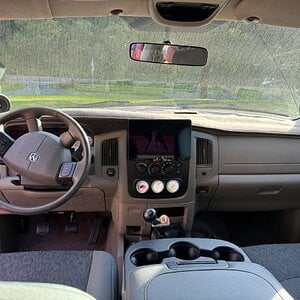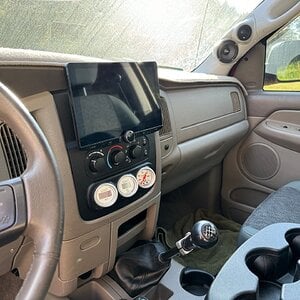PR170M0 is a great snag for the money. Rumor says it was designed by the
founder of PHL audio when he was working at Audax. The PHL1120 cost alot
more, it has more xmax, higher power handing, but it really resembles the PR17
very close in sound. It would be very difficult to tell the two apart soundwise. You
should only consider the PHL if you want to push your loudpeaker to higher SPL
limits. PHL1340 is a midwoofer that competes with Seas W22. While it won't
have the bass performance as W22, the PHL top end performance rules.
E-speakers has the 1360. I haven't tried it but it seems to resemble the 1340.
Many PHL drivers listed on their site are generic as they do alot of OEM work.
E-speakers was sourcing a 1240 driver with phase plug. 1240 is the 16 ohm
version of 1340. I don't think that plug was a stock item, maybe a special order?
I'm using PHL for my high end build, the overal sound was better than
Focal and Seas when you look a the big picture. Paper treated cones have
superior sound. Kevlar, magnesium and metal cones are inferior in spite
that manufacturers try to market them as being superior to old school paper.
PHL also does rear cone treatments, a special order if you buy bulk. Ie, if
you specified a 1121 vs. 1120, the number 1 on the end is the code for rear
cone treatment. I ordered a bunch of 2451's for my future array, this is a 100dB
8" pure midrange that really kicks some butt if you have a high output tweeter
like pro-planar or horm tweeter. A regular planar, ribbon or dome can not keep
up with it's SPL ability. If you want a killer 10" pure midrange, PHL3450.. 101dB
sensitivity. A monster mid. It also requires an uber tweeter to keep up.
Word on the street says that the old Fountek ribbons offers great sound just like
the AC ribbons. The newer Founteks though, are not aluminum ribbon element,
they are of some composite material, but I haven't seen any bad reviews on the
newer design.
It's pointless to do technical measurements because it really doesn't solve
the root issue -> "Do you like the sound?" ... Will measurements tell you if you like
the sound or will doing listening tests tell you more? I personally hook up
the individual drivers and play around with them to understand their capabilities.
Get your tweeter candidates and hook one up to the amplifier and set your
crossover to a ballpark 'safe' crossover point. For example, set your tweeter
crossover to LR8 3khz. Install the inline fuse {1 amp AGC} to protect the tweeter.
Play some tunes and just listen to the tweeter. As you listen to the music,
slowly turn the crossover knob and lower the crossover frequency and note
the effect it has on the sound. Keep the crossover. Try to hit the lowest
recommended crossover range, in this case lets say ~1.5khz is a good low
target to test. Skew between 1.5khz and 2khz to see what frequency is
more pleasing to the ear. I prefer 2khz plus or minus 300hz. For uber crazy
SPL, adjust it closer to 3khz to prevent tweeter damage. For very low SPL,
you can go under 1.5khz. I have my PT2 planars set at 1.2khz for very low
listening levels, up to 3khz for headbanging SPL.
To test the midranges you can do many types of tests. You can test the
driver 'as is', out of the box. place the driver on the table tilted at you
and just play music full range to see what it sounds like out of the box.
As you raise SPL, cone excursion rises as there is alot of bass content in the
music and you can damage the driver so only do this test at lower SPL.
This gives you an ideal on what the driver sounds like 'as is'. To do high SPL
tests, high pass the driver. Select 100hz and work your way up to maybe 300hz
to keep cone excursion low while allowing more SPL. Listen to the driver at high
SPL and notice the distortion manifest. You should hear cone breakup modes
and kevlar, magnesium, metal, etc., coned drivers will start to sound pretty bad.
You may notice that treated paper coned drivers sound more pleasing. This gives
you an idea on what these cone materials do or what they don't do. - lol
Next,
Since you won't run the midrange without a low pass filter, but doing the above
test is nice to do to see what the driver does, do the realistic test with high pass
and low pass filter enabled {bandpass}. This is a representation of how the driver will work. What you will notice is a lack of top end as the high frequencies
are not being attenuated by the crossover and cone breakup modes aren't being
manifested as much. Tweak the low pass crossover frequency to understand
where the nasty sound starts to manifest and make a mental note for each driver
you test.
For example, my W22 will sound bad above 2khz with 4th order. My PHL
sounds great full range. What does that tell me ? It tells me that the Seas Excel
is really picky and the crossover frequency chosen is critical for best SQ. PHL on
the other hand, tells that I can run the driver full range and not be offended by
the sound, therefore any low pass frequency I choose will work well and I can
now place all my attention on the tweeter and where does it work best? Set
the crossover to where the tweeter works best and that is also the default
setting for the midrange since it is not picky.
If you have a finicky tweeter & midrange, then you need to find one crossover
point that will work with both drivers.
You are better off designing the loudspeaker for proper driver synergy and
human interfacing synergy //content.invisioncic.com/y282845/emoticons/eek.gif.771b7a90cf45cabdc554ff1121c21c4a.gif//content.invisioncic.com/y282845/emoticons/smile.gif.1ebc41e1811405b213edfc4622c41e27.gif
Determine the primary listening position, ie standing up? sitting down? etc.
Place the drivers so they are aligned with your head, so if you were to
look at your speaker, you are staring right at the tweeter and the midrange
should be right under the tweeter with minimal gap. If you have to look way
up to see the tweeter, then it's too high. If you have to look down at the tweeter, it's too low. If you made a tilt mechanism, problem solved for any
listening position.
Next, since the woofer will operate into the low midrange region, somewhere
in the 300hz - 500hz range, you want good midrange/woofer synergy. Place
the woofer close to the midrange vs. placing the woofer down on the bottom
like you see in many other designs. This will give you seemless integration
from tweeter to mid to woofer without any major gaps of distance.
If you want to make an open baffle woofer design then obviously you need
a wide baffle and the design starts to look fugly. You will have to figure out
what ratios you prefer.
Before you finalize any design, have you really determined that you want open
baffle design or are you listening too much to those dummies at DIYaudio ?//content.invisioncic.com/y282845/emoticons/laugh.gif.48439b2acf2cfca21620f01e7f77d1e4.gif
If you are unsure, make a test box. Make a deep test box for your midrange
and test it in a sealed enclosure with alot of loose polyfill inside. This will
keep SQ high if the box is very deep. If you want to improve SQ more,
use loose fiberglass insulation inside {pink stuff, etc}, but it can make you itch.
Partsexpress Acoustastuf is esoteric polyfill, it is more dense than Walmart
polyfil but alot more expensive.
Once you are done with the sealed box listening test, destroy the box
and remove the back and sides and do your OB test. Which implementation
did you like ? Sealed box or OB ? Use cheap particle board or chipboard for
your test boxes.
Do the same experiment with your Dayton 15 woofers. Make a ported box,
in spite that you will have a seperate subwoofer, a ported box can boost
performance {more on that later}. I would probably see if I can tune the box
in the 35hz range, no less. Do some ported box listening tests. When done,
plug the hole and now you have a big sealed box. Do another sealed box
listening test. Last, destroy your box and do an OB listening test. Which one of
three did you like ?
Ported boxes can increase the SQ of wideband woofers. Here's how. As you know, woofer cone excursion rises in sealed boxes playing bass, but in ported
boxes, cone excursion is less near port tuning not to mention the ported box is
just more efficient over sealed. If you ask the woofer to play higher frequencies
AND if cone excursion is high, you get modulation distortion. The sound
you hear is similar to the sound you hear if you talked right next to a spinning
fan blade. Your voice modulates. A woofer with high excursion playing wideband
will modulate the lower midrange and sound bad. So.... the trick is to keep
cone excursion low. You can operate the woofer at reduced SPL to keep low
frequency excursion low. You can raise the high pass crossover to keep excursion
low, but that kinda stinks, why have a 15" woofer if you can't crank it up with
high SQ ? The solution is to make a ported box so when you do crank it, cone
excursion is less near port tuning, you get mad bass output and high frequency SQ is better than the sealed box.
I've done these tests with my Lambda Apollo woofers. I was 100% convinced
that a sealed box is best for SQ based on industry stereo type, but I noticed
that cone excursion was too high and midrange modulation was making the sound unsweet. I made a ported box tuned to 35hz and not only did I get
more bass output, cone excursion was less and less audible modulation distortion. /sweet
If you do an OB design and operate that woofer into the 300-500hz range,
I think you will run into alot of problems at higher SPL with midrange modulation
distortion as OB designs require an EQ to boost the bass response because
OB's lack decent bass output. Using an EQ to boost cone excursion seems very
counter productive to me. You should really make the test boxes to make
sure you have the right design for your listening habits. Verify first by making
the test boxes, then design the loudspeaker based on the data you gathered.



